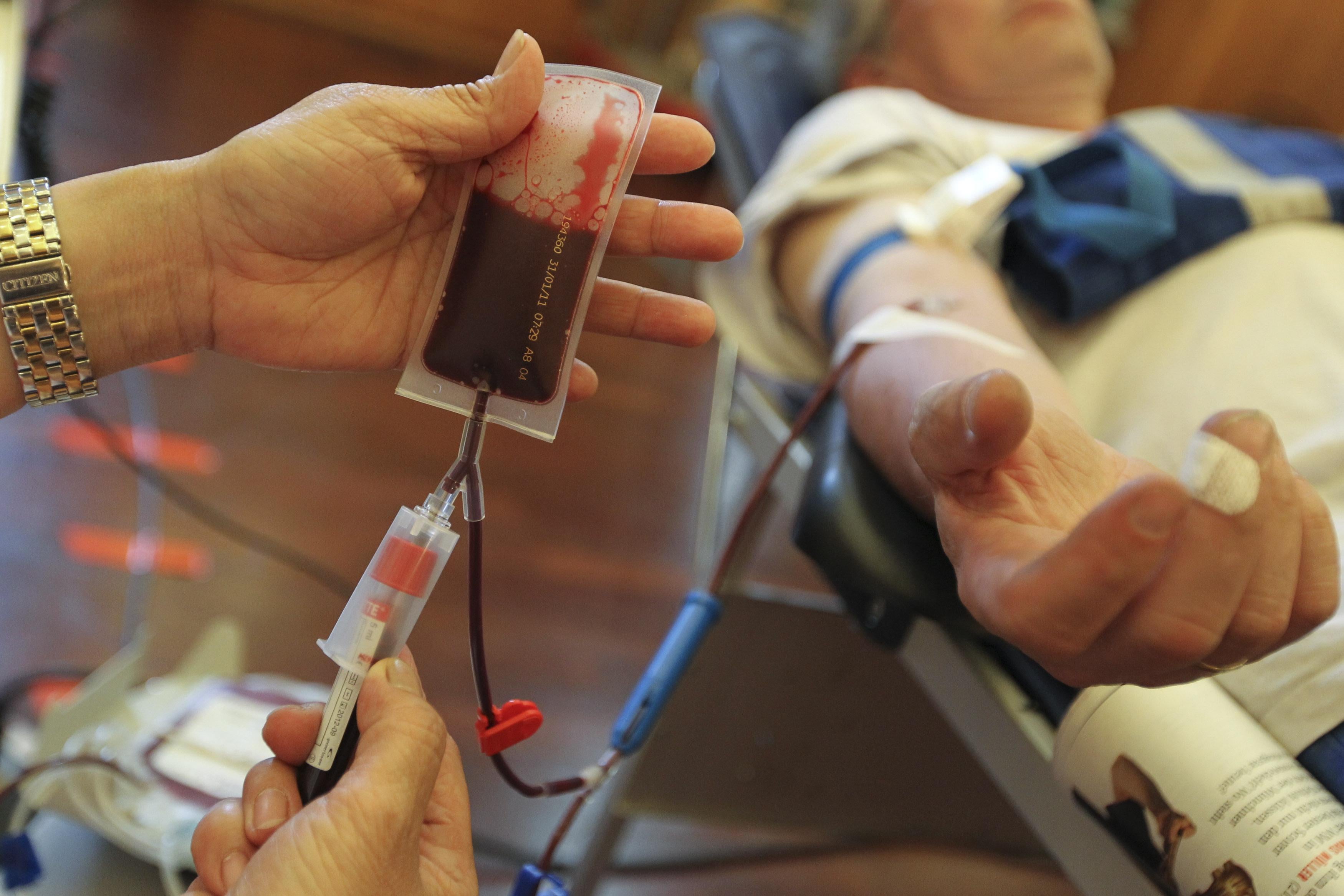As part of its accelerating effort to turn gay people into second-class citizens, Russia recently announced that it was reinstating its ban on blood donations from gay men—while offering all gay people free “conversion” therapy to heterosexuality. A Russian MP who supports the policy, Mikhail Degtyarev, claims that the ban is simply a necessary public-health measure, alleging, without any basis in fact, that 65 percent of all HIV-positive people are gay.
It’s easy to be outraged at Russia’s blatantly homophobic move to forbid gay blood donations—until you remember that the United States does the exact same thing. In 1983, at the dawn of the AIDS crisis, the FDA prohibited donations from men who have had sex with men since 1977. (The policy also rejected donations from women who had had sex with such men in the previous year.) Those were days of terror and confusion. Thirty years later, however, after leaps and bounds in HIV detection and prevention, the ban on gay blood donation remains unaltered.
That such a homophobic ban remains on the books is simply unacceptable. The FDA’s policy is outdated, unjustified, and ineffective. It ignores science, curbs blood donations, and telegraphs to gay people that they are diseased. Russia might feel comfortable using such a measure to demean its gay population. But it has absolutely no place in the United States.
On a purely scientific level, the gay blood donation ban is utterly illogical—just ask the American Medical Association. It is true that, in the very early days of AIDS, scientists struggled to detect the virus and did not develop a speedy and accurate test for several years. Thus, when AIDS was not detectable and considered a “homosexual disorder,” the ban had a certain measure of logic. Today, though, that logic has been entirely erased by advances in HIV testing. All donated blood goes through two tests: an immunoassay, which can detect HIV-related antibodies 15 to 25 days after infection, and a highly accurate RNA test, which essentially detects HIV at the moment of infectiousness. This rigorous, high-tech testing effectively ensures that HIV-infected blood will never be transmitted through donations.
Moreover, the FDA’s decision to set aside gay men as the primary carriers of HIV is based on the noxious myth that HIV is exclusively a gay problem. It isn’t: The virus affects virtually every realm of society, and while it may target some groups more than others, this doesn’t justify a population-specific ban. As my colleague William Saletan pointed out in 2010, gay men may be somewhat more likely to have HIV—but so are black people, by a significant margin. Does this mean the FDA should ban blood donations from black people? Of course not: It merely means that blood donation centers should assess donors as individuals, not as groups. In fact, the FDA already does this with at-risk straight people: A heterosexual who has had sex with a prostitute, used IV drugs, or had unprotected sex with an HIV-positive opposite-sex partner more than a year earlier is welcome to donate blood. But a drug-free gay man in a monogamous relationship for 30 years? His blood is banned for life.
So much for a scientific basis, then. But the gay blood donation ban is more than bad science: It’s blatant discrimination. By singling out gay men, the FDA has kept alive the toxic canard that gay people are disease-prone and intrinsically disordered. It explicitly tells them—and the country—that gay men’s blood isn’t safe enough to be donated and that gay men can’t be counted on to monitor their own health. The ban implies that gay men are lesser humans, untrustworthy and unhealthy, and prevents them, on the flimsiest of rationales, from partaking in a basic and widely respected act of good will.
On a personal level, the FDA’s ban ostracizes and embarrasses gay men in subtle but insidious ways. Blood drives are common at offices, universities, sporting events, and other social activities, where donors are encouraged to tout their good deed with a button or a sticker. (In Washington, D.C., the Nationals offer blood donors a free ticket to a game—no gay men need apply.) For gay men, these drives are painful lessons in social exclusion. A gay man may watch as one after another of his officemates visits the blood mobile, then wonder how to explain why he hasn’t joined them. It isn’t easy, after all, to explain to a colleague that though you’d like to give blood, the FDA, based solely on your sexuality, has deemed you too likely to be diseased.
Unsurprisingly, the FDA’s anti-gay ban isn’t the first instance of discrimination in blood donation. Until 1942, the Red Cross prohibited all African-Americans from giving blood, on the basis that their blood was inferior and likely to be diseased. (Sound familiar?) As World War II progressed and the blood shortage became dire, this policy was repealed—in favor of segregated blood donation. Under this policy, all blood donations were labeled “white” or “colored,” and no “colored” blood was ever given to white patients. (In an emergency, “white” blood could be given to black patients.) Blood segregation remained in effect into the 1950s.
Whether it pertains to black people or gays, blood bias always grows from the same root: hazy science tinged with bigotry. The AIDS panic is over, but homophobia is alive and well, and it continues to infect the FDA’s policies, even as America faces a persistent nationwide blood shortage. It’s time to stop it. As Russia slides further into vicious homophobia, many in the United States are hoping to claim a moral high ground. But so long as we tell American gay men, against all science and logic, that their blood is diseased and inferior, we have little high ground to claim.
